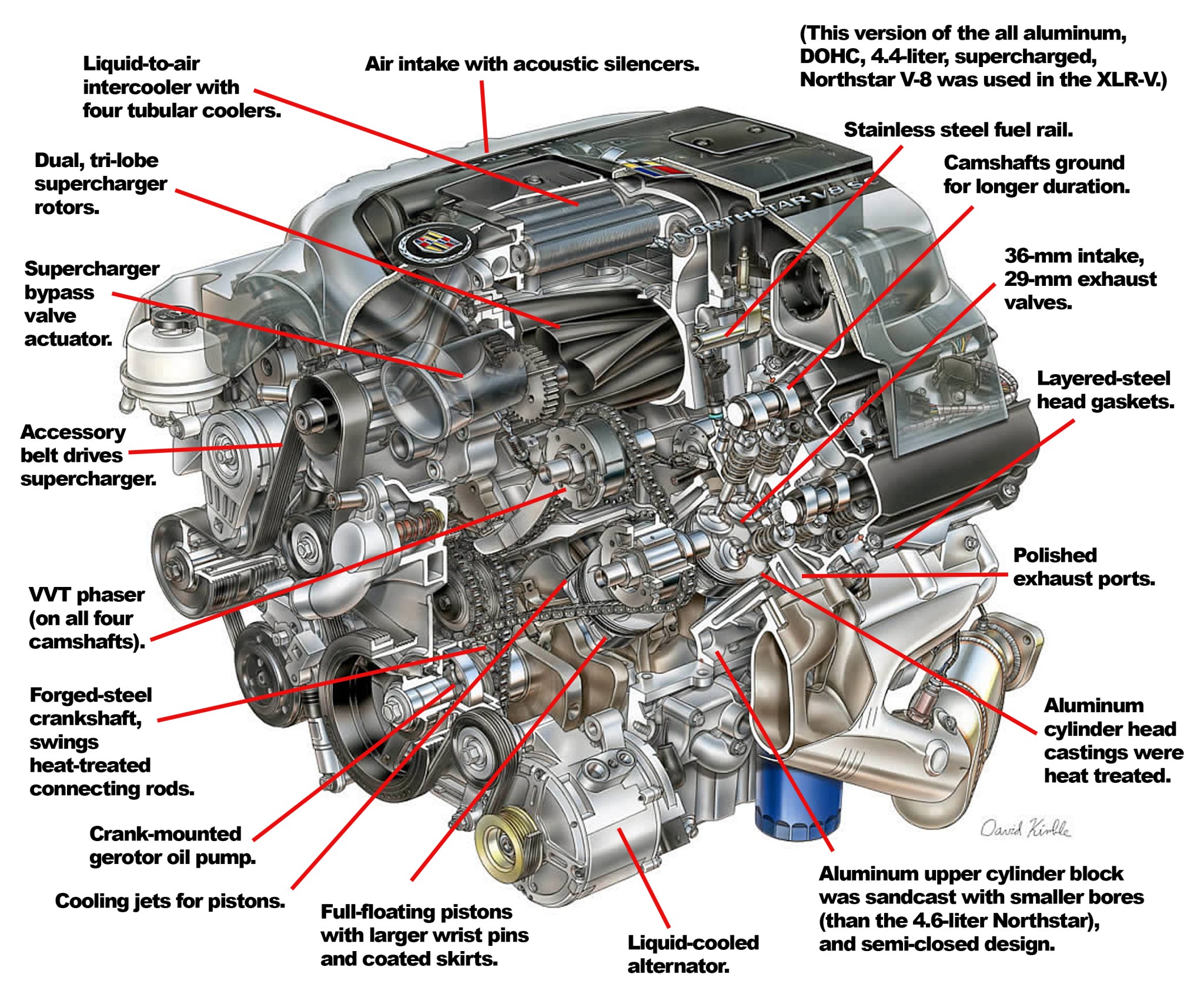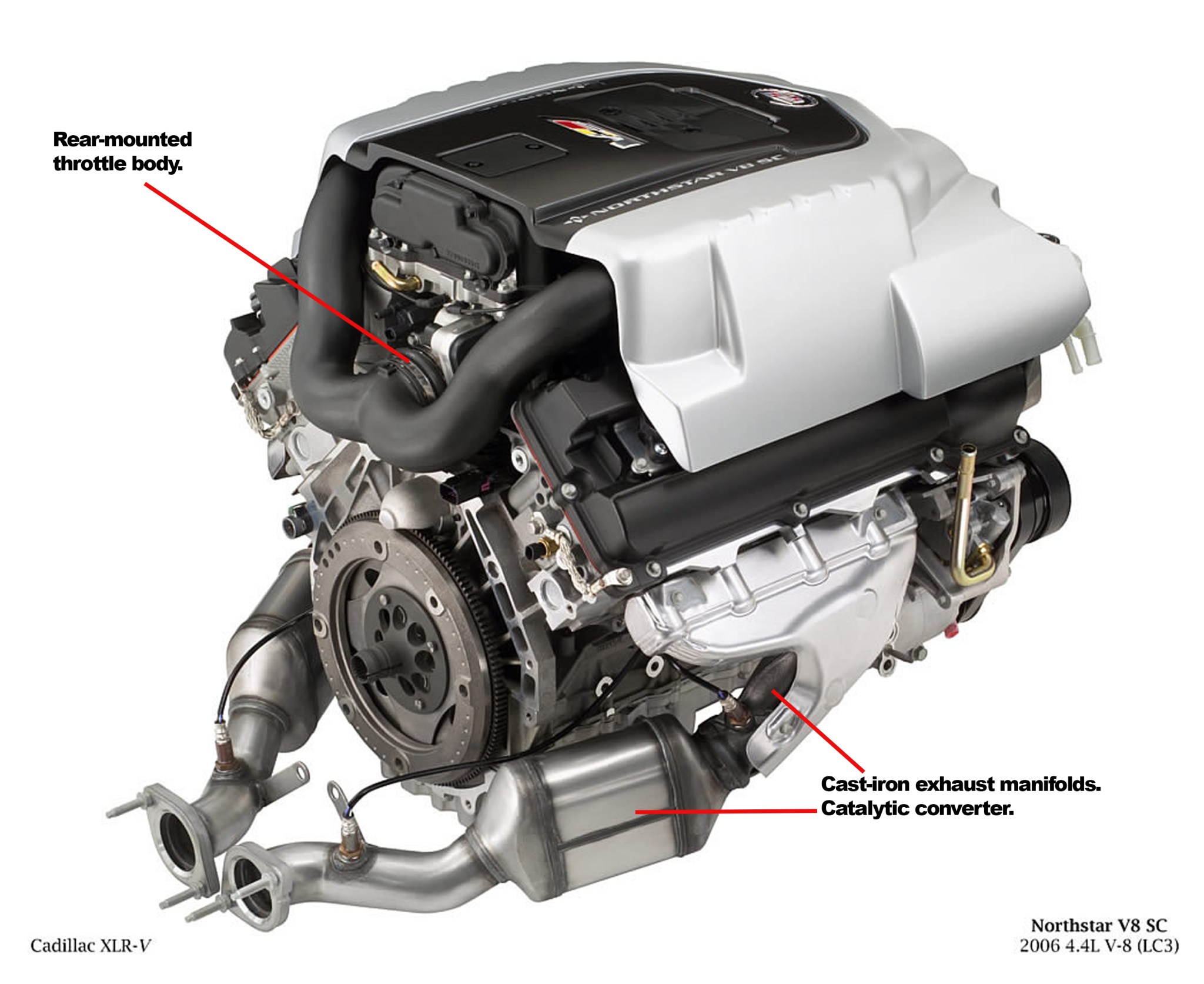For decades, Cadillac was synonymous with luxury, but in the early 2000s, the brand embarked on a bold new mission—to challenge the world’s best high-performance sedans. The result was the Cadillac CTS-V, a sports sedan that combined Corvette-derived V-8 power with sharp handling, aggressive styling, and a six-speed manual transmission.
When it debuted in 2004, the CTS-V made an immediate impact, signaling Cadillac’s intent to compete with European performance giants like BMW’s M Series and Mercedes-Benz’s AMG lineup. However, Cadillac didn’t stop there. Following the success of the CTS-V, the brand introduced two more V-Series vehicles:
- The XLR-V roadster (2006-2009)
- The STS-V sedan (2006-2009)
While these models never gained the same recognition as the CTS-V, they represented Cadillac’s commitment to high-performance engineering. What set them apart was their supercharged 4.4L Northstar V-8, an exclusive hand-built engine that blended raw power with refined performance.
This article takes a deep dive into the CTS-V, XLR-V, and STS-V, exploring their unique characteristics, engineering breakthroughs, and lasting impact on Cadillac’s performance legacy.

The Difference Between the CTS-V and the XLR-V/STS-V
The first-generation CTS-V (2004-2007) was powered by a Corvette-derived LS6 V-8, producing 400 horsepower and paired with a Tremec six-speed manual transmission. It was a rear-wheel-drive (RWD) beast, built to take on the best sports sedans in the world.
In contrast, the XLR-V and STS-V took a different approach, utilizing a unique, Cadillac-developed supercharged 4.4L Northstar V-8. Unlike the LS engines in the CTS-V, these Northstar engines were:
✔ Custom-built and hand-assembled at the GM Performance Build Center in Michigan.
✔ Designed exclusively for Cadillac’s rear-wheel-drive performance models.
✔ Equipped with a supercharger for instant torque delivery and high-speed capability.
While the CTS-V focused on aggressive track-ready performance, the XLR-V and STS-V emphasized high-speed touring with effortless power and refined engineering.

Performance Specifications of the STS-V and XLR-V
The STS-V and XLR-V were powered by the same 4.4-liter supercharged Northstar V-8, but their performance figures varied slightly.
Cadillac STS-V (2006-2009)
- Horsepower: 469 hp @ 6,400 rpm
- Torque: 439 lb-ft @ 3,800 rpm
- Transmission: Hydra-Matic 6L80 6-speed automatic
- 0-60 mph: 4.8 seconds
Cadillac XLR-V (2006-2009)
- Horsepower: 443 hp @ 6,400 rpm
- Torque: 414 lb-ft @ 3,900 rpm
- Transmission: Hydra-Matic 6L80 6-speed automatic
- 0-60 mph: 4.6 seconds
The XLR-V had slightly less power due to intake and exhaust system modifications required to fit the engine into the compact roadster body. However, both models delivered 90% of their peak torque between 2,200 and 6,000 rpm, ensuring instantaneous acceleration and smooth power delivery.

Engineering Innovations in the 4.4L Supercharged Northstar V-8
The 4.4L Northstar V-8 was an evolution of Cadillac’s legendary 4.6L Northstar, re-engineered specifically for high-performance applications. Key improvements included:
1. Strengthened Engine Block for Forced Induction
- The 4.4L Northstar featured a sand-cast aluminum upper block with a semi-closed deck design, unlike the 4.6L’s open-deck construction.
- Cylinder bores were reduced to 91mm (from 93mm), improving durability.
- Thicker flanged iron cylinder liners were used to withstand the stress of supercharging.
2. High-Flow Cooling and Oil Management
- Revised coolant passages increased flow, preventing heat buildup under boost.
- A cast-in oil gallery supplied oil to piston cooling jets, reducing combustion temperatures.
3. Unique Cylinder Heads and Variable Valve Timing (VVT)
- Lowered compression ratio to 9:1, optimizing performance with forced induction.
- Reworked combustion chambers for improved efficiency.
- Stronger deck thickness in the heads for increased durability.
- T7 heat-treated aluminum construction for maximum strength.
- VVT (variable valve timing) on all four cams, with unique programming tailored for performance.
These refinements ensured that the 4.4L Northstar could handle extreme loads without sacrificing longevity or reliability.
https://stories.hemmings.com/wp-content/uploads/2025/01/northstar-supercharger.jpg?resize=2048,1673
The Eaton Supercharger: Power on Demand
One of the defining features of the 4.4L Northstar was its supercharger.
- Designed by GM Powertrain and manufactured by Eaton.
- Roots-type blower with tri-lobe rotors, optimized for smooth power delivery.
- Integrated liquid-to-air intercooler, cooling the compressed air before it entered the engine.
The result? Instant throttle response, massive mid-range power, and relentless acceleration.
Fuel was delivered via dual stainless-steel fuel rails, ensuring a consistent fuel supply under heavy loads.

Why the STS-V and XLR-V Are Rare Collector’s Cars Today
Despite their engineering excellence, both the STS-V and XLR-V were discontinued after 2009. Their low production numbers make them highly desirable among collectors today.
Production Numbers:
- STS-V: 2,440 units (2006-2009)
- XLR-V: 2,188 units (2006-2009)
- 2009 models are exceptionally rare:
- 96 STS-Vs produced
- 239 XLR-Vs produced
With such limited production, these V-Series models have become hidden gems in the Cadillac performance lineup.
Conclusion: The Legacy of Cadillac’s First V-Series Lineup
The Cadillac CTS-V, XLR-V, and STS-V marked a turning point in Cadillac’s history, proving that the brand could compete with the best high-performance vehicles in the world.
✔ The CTS-V put Cadillac on the performance map, blending American muscle with European refinement.
✔ The STS-V and XLR-V showcased Cadillac’s ability to innovate, introducing supercharged luxury performance vehicles.
✔ The 4.4L Supercharged Northstar V-8 remains one of Cadillac’s most exclusive and well-engineered engines.
While the XLR-V and STS-V flew under the radar, they now stand as rare and collectible performance machines, representing a unique chapter in Cadillac’s storied history.
With the modern Blackwing V-Series carrying Cadillac’s performance legacy forward, enthusiasts will always look back at the first-generation V-Series as the beginning of a new era—one where Cadillac redefined what it meant to be an American luxury brand.
